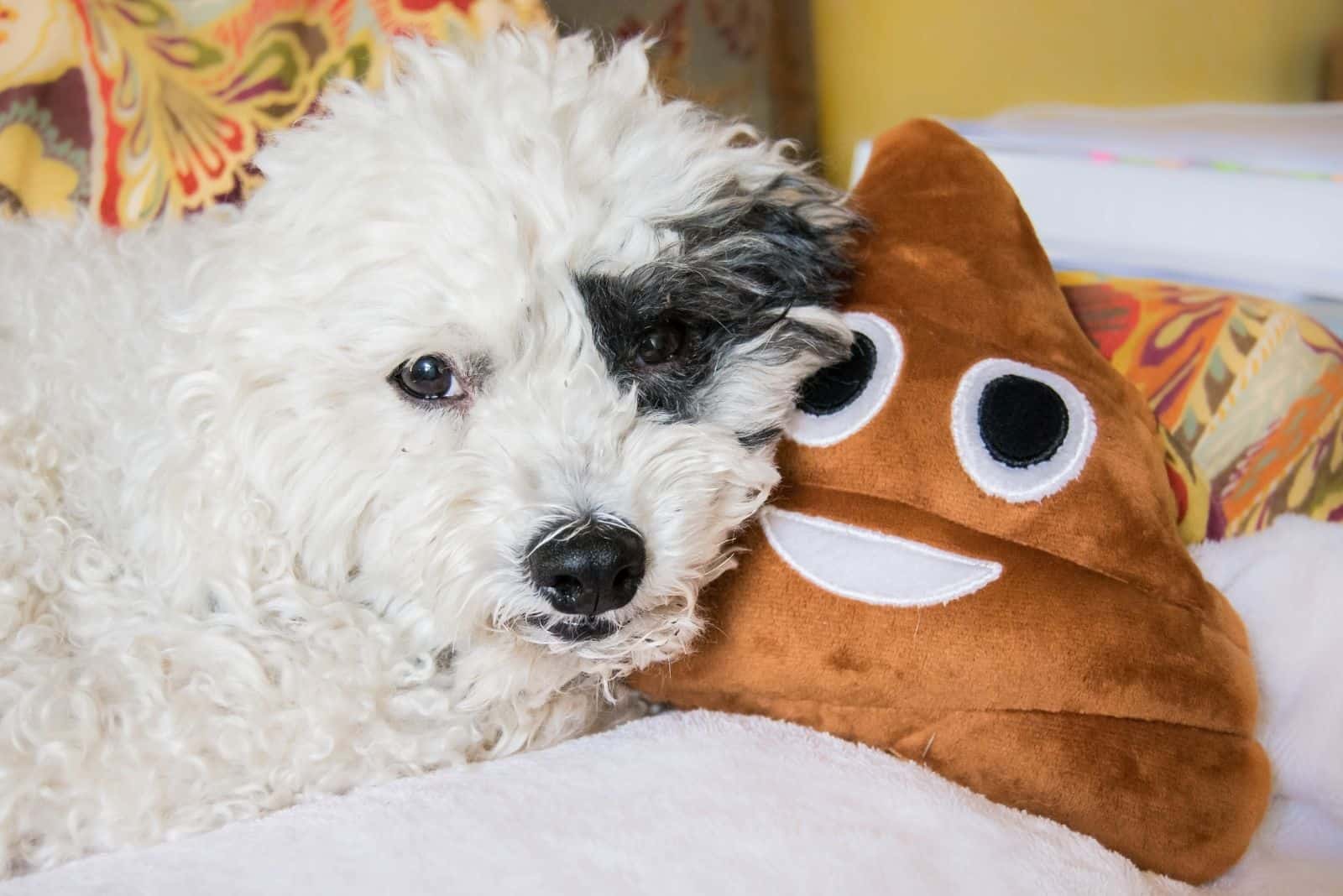Help, my Rex has some white specks in his dog poo! What are they? Will my dog be okay?
Well, good thing you’re worried. It’s a good sign that you care. White specks in dog poop can be dangerous, but they also can mean nothing.
Why wait for something bad to happen? Act in time!
Whether you’re a first-time dog owner or you know your way around pooches, you should always check how your dog’s number twos look.
Yes, it’s no fun, but your dog’s health is more important. Are you ready to sniff around for white specks?
What Are Those White Specks?
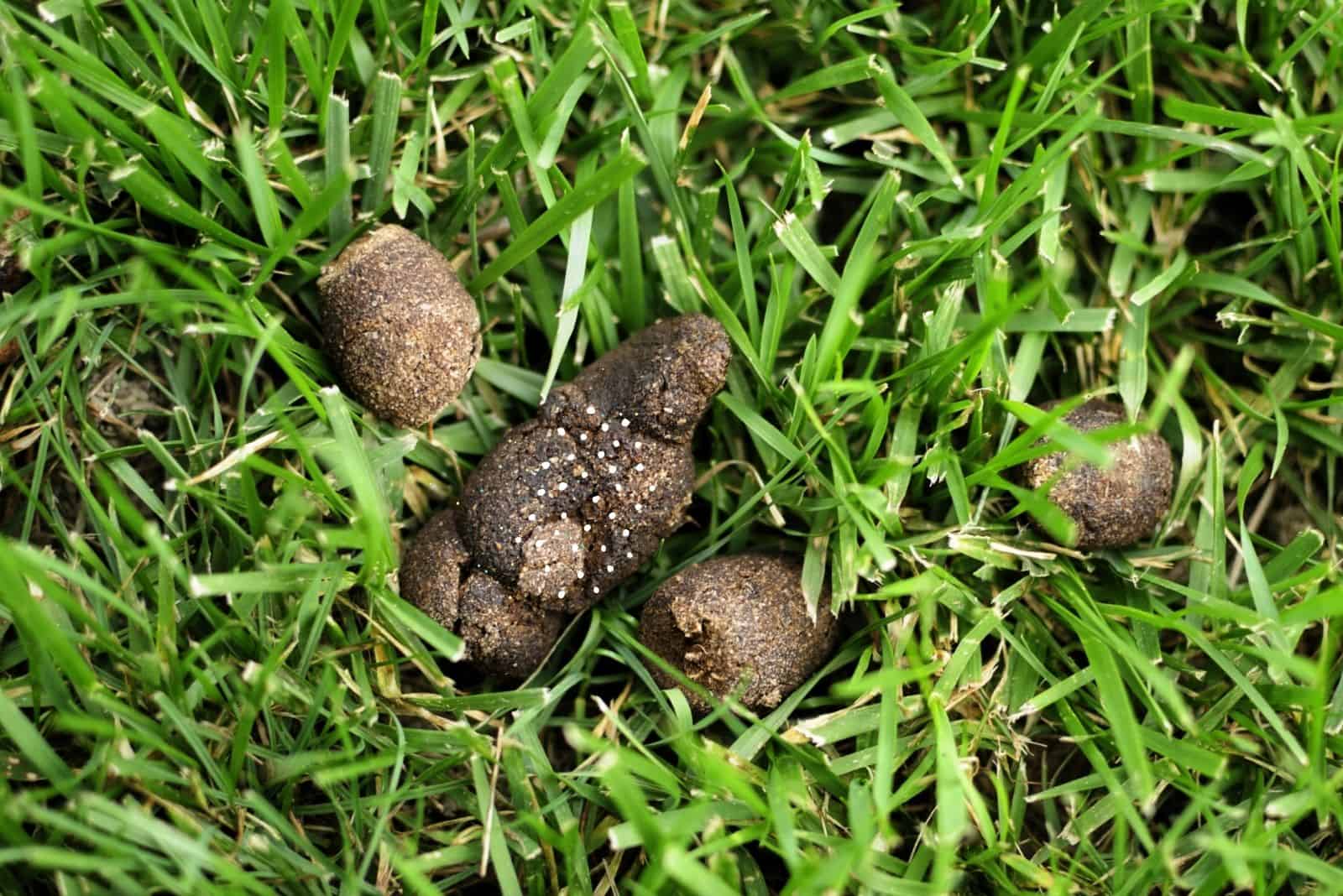
The white specks we’re talking about are exactly what they appear to be: simple tiny white dots in your dog’s doo-doo.
They’re not always a reason to panic as they can appear with almost any dog.
However, this doesn’t mean they’re harmless or to be ignored. Sometimes these white dots can be a sign of some health issue we’re not aware of.
That’s precisely why we’re going to learn how to identify these nasty spots and how to treat them.
How Do They Look?
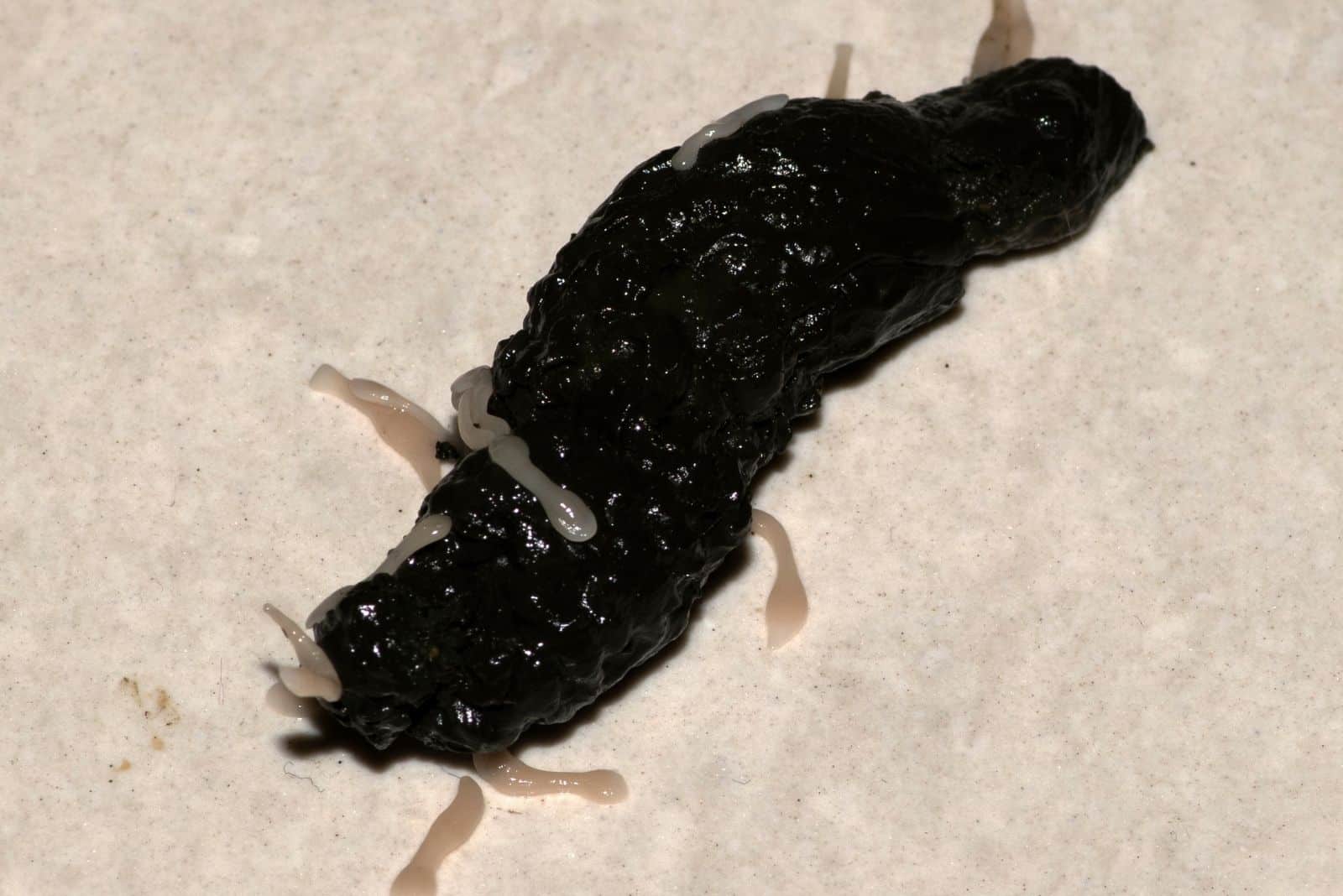
Roundworms and tapeworms are the most common worms found in a dog’s poop. They are both white or light brown, usually found in small rice-like shapes.
Roundworms will be rounder-shaped, much like their name suggests. The roundworm eggs and larvae also get passed into the poop, which is how they spread.
Always make sure the area where your dog has pooped is cleaned after.
Tapeworms are almost entirely similar to roundworms, but they appear to be flatter in shape.
When Is The Time To Panic?

White spots can be seen with the naked eye within several seconds. The main concern you need to have here is whether the spots are moving or not.
If they’re static, then you’re A-okay. But, if they move, you might have a big problem.
Your dog could suffer from an infection and have nasty pests!
Always remember to look closely when inspecting. Sometimes these spots appear to be still, but then you see them twitching, and everything is clear.
Why Do The White Spots Appear?

There are several reasons why white spots can appear in your dog’s stool.
The most common are:
• Undigested food
• Fly larvae
• Worms and other pests
The most common cause of white specks in dog feces is undigested food. Naturally, if your dog eats something other than kibble, you can expect it to show up in their stool.
For example, traces of bones are usually found undigested because of their structure.
Pay some attention to the quality of the dog food your pup is munching on. These bones can move through the digestive system undigested.
Usually, it’s all because of low-quality dog food.
Basically, all dog food that uses meat also contains tissue and bones. That’s why it’s impossible for dog food to come without a trace of bones.
Still, there are some top-notch quality dog foods that add more meat and fewer bones.
These bone pieces are small and very hard to notice. You can only spot them if you look closely at the poop itself.
Dogs shouldn’t eat food that’s not meant for them, for example human food like spam, Cheerios, paprika, blue cheese, etc. Sometimes food like rice cakes, or dairy products like sour cream or whipped cream may cause these white specks. So, keep these treats on a normal level.
Food that’s not properly absorbed or digested can have white specks. Some severe malabsorption cases have pale and bulky dog poop as a symptom due to high-fat content.
Other causes behind food malabsorption are:
• Intestinal inflammation
• Abdominal pain
• Diarrhea
• Fatigue
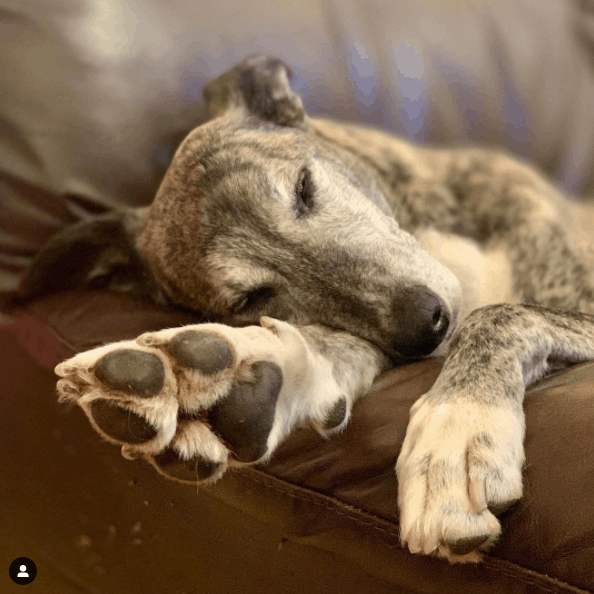
Photo from: @jodie.barsby
White specks may appear due to the use of medication. Some medications can’t be digested properly, hence why they remain complete in the feces.
If this happens to your dog, you might want to talk to your vet to let him decide whether to change meds or not.
If your dog’s poop has been outside for some time, the white specks that appeared may have no connection with your dog.
They may appear as a result of a fly laying eggs in your dog’s poop.
The maggots or fly larvae can contaminate your backyard, causing infections in humans too. That’s why it’s so important to clean up after your dog immediately.
Some dogs suffer from fungal infections like candida. Sometimes it will be possible to see clumps of white matter in your dog’s poop.
The problem becomes even more complicated if your dog suffers from a yeast infection or has undergone any ongoing treatment that could weaken its immune system.
White dots can also be a result of worm infection. The most common one is tapeworm.
This parasite has a small head and long shape, which looks like a shoelace or a string. It can become up to several feet in length.
Tapeworms lay eggs inside the dog’s intestines as soon as they reach the adult phase. Those white specks we see are actually their eggs.
Types Of Worms Found In A Dog’s Stool
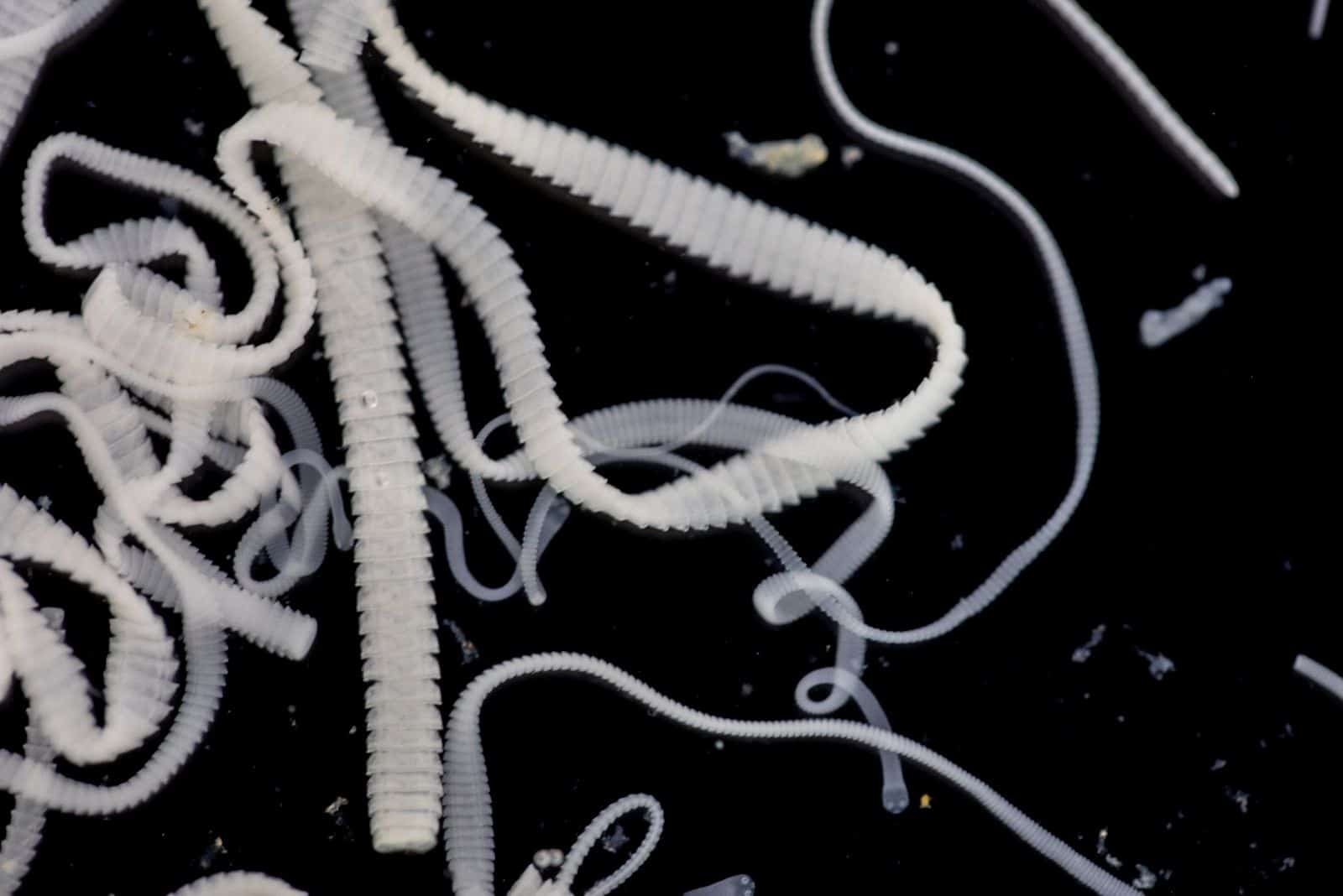
Unfortunately, finding worms in a dog’s stool isn’t the only symptom and trouble these pests cause.
The most common worms found in a dog’s poop are:
• tapeworm
• roundworm
• hookworm
Tapeworms feed off a dog’s intestines. They can lay eggs in the lining of the dog’s innards.
Dogs usually get this pest after eating fleas. You will notice sesame seed-like specks on your pup’s behind as one of the first signs of the infestation.
Furthermore, if your dog shows signs like scooting on its behind and licking its private areas more often, you’re definitely dealing with an infestation.
Roundworms are more complicated than tapeworms. They appear when your dog eats another animal’s feces or spoiled soil.
These worms look like long strands of string. If your dog is infected, you will notice signs like irregular bowel movements and vomiting.
Hookworms can be brought on like roundworms. They’re the nastiest parasites since they feed off a dog’s blood.
Also, hookworms can penetrate an animal via the skin. So, rolling in another animal’s poo isn’t just gross, it’s potentially dangerous too!
Some worms can’t be seen with the naked eye, such as:
• whipworm
• heartworm
The symptoms of whipworm are weight loss, vomiting, and gas.
Heartworm is caused by mosquitoes. It affects the heart, blood vessels, and lungs. One of the earliest symptoms can be caught.
Since these worms can’t be seen in the dog’s stool, they can be detected using a blood test.
They might not be visible changes in your dog’s routine. But, look closely for any signs of change in your dog’s activity levels.
Treatment At Home
The easiest problem here is the undigested food. It would be best to make small adjustments to your dog’s diet.
It’s absolutely normal for food to come out in different shapes and sizes, all depending on if your pup eats kibble or raw food.
Dog food should consist of more meat than bone. Bones can irritate the GI tract and cause choking, as well as bacterial infections.
Maggots appearing in your dog’s poo mean you should clean up after your dog more often before the fecal matter decomposes and attracts flies that then breed maggots.
Also, check our article on home remedies for dog scooting.
Handling More Serious Infections

Of course, you’ll need to see the vet if you see your dog poops a lot or suspect your dog has a serious intestinal infection. In this case, your dog will need a deworming treatment.
Some people try to handle deworming at home. However, this shouldn’t be a common practice as only the vet can identify which type of worm is causing health issues.
Bringing a stool sample along with you when visiting the vet is an excellent idea.
When your vet is certain about the diagnosis, he will prescribe the correct treatment, which can be either expensive and ineffective or simple and cheap.
Treatment can be administered orally for several days or by injection. Puppies under three months should have worming treatment every two weeks.
After that, until they hit the half-year milestone, deworming should happen once a month.
Puppies can get in contact with parasites like roundworms even at birth. The sooner you catch the symptoms, the better!
Worm Prevention At Home

Any type of worm can cause a heap of problems! Trust us, you don’t want them, and neither does your dog.
That’s why there are a couple of preventative steps any dog owner can take to fight worms.
It’s important to watch your dog snooping around when outside. Make sure it doesn’t nibble on other animals or their poo.
Still, it’s quite understandable you can’t watch your dog all the time. What you can do is check the area for ticks, lice, or rodents.
A flea-free environment, along with routine testing and good hygiene, are your helpful sidekicks when fighting worms.
Do Worms Die After a Dog Poops Them Out?
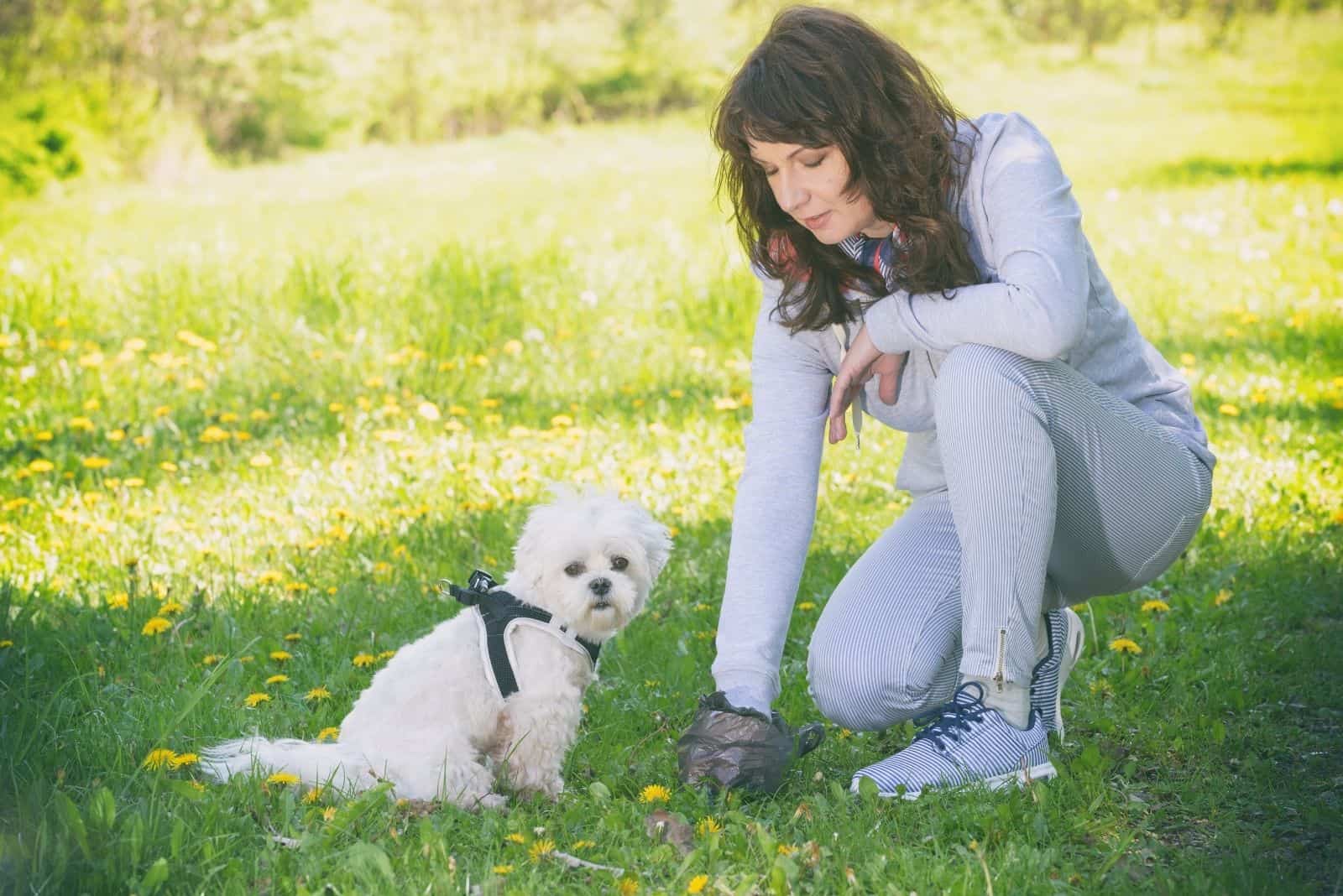
The stage at which the worm is passed in the poop will determine if the worm dies after your dog poops it out.
A segment of an adult worm won’t survive once it’s outside the host environment.
Eggs and larvae of worms can survive outside once they’re passed. They remain alive and can pass to humans and other animals.
Since it’s hard to determine the difference between eggs, larvae, and worm segments in the poop, the safest thing you can do is clean up after your dog immediately. Also, keep the deworming treatment always on schedule.
The best way to get rid of worms is to prevent them in the first place. Worms are especially common in puppies.
Simply get the deworming meds, and you’ll be sure you’ve done what you need to fight these parasites.
What If My Dog Has Diarrhea With White Specks?

Worms in the intestinal tract are the first diagnosis of diarrhea with white specks.
In fact, according to the American Kennel Club, diarrhea is the primary symptom of intestinal worms.
If those white dots are moving, your dog is definitely suffering from worms.
The appearance of blood in diarrhea is not a rare occurrence. So, don’t close your eyes to red and dark purple spots in poop either.
Here are some other symptoms that occur if a dog has worms:
• Change in appearance – usually unfavorable changes in energy level
• Vomiting – the white specks can also be vomited, so don’t just rush to clean it. Examine it first!
• Weight loss – worms are eating nutrients your dog takes in, hence the weight loss. It also means the worms have been there for a while
• Potbelly – in other words, a bloated stomach with growing worms in the abdomen, usually roundworms. Puppies are prone to potbellies.
• Dehydration – sunken eyes, dry gums, loss of skin elasticity, weakness, and lethargy are the first symptoms of dehydration. It’s a no-good situation, nevermind if the worms are causing it or a lack of water.
There are cases of dogs living with worms without having any symptoms or ever getting sick.
It’s the type of worm and the severity of the infestation that decide how serious or not the situation will be.
Diarrhea is a condition not to be fooled with, even if it has no connection with any of the parasites listed above. Jump at the first sign of dehydration as it may lead to severe health problems.
There’s always a cause behind even the slightest health problem. If you think worms will crawl out on their own, you’re so wrong. Only an appropriate treatment will help you get rid of these pests.
Also, besides white specks in dog poop, you could also notice dog poop appearing in other colors. You can learn more on this topic in our dog poop color chart.
To Sum Up…
Long story short, looking at your dog’s poop is important. No, as you can see, we’re not fooling around.
You can tell a lot from your pooch’s doo-doo. Any possible health problem can be detected in time if you snoop around Fido’s number two.
What you need to do is to know how your pup’s normal stool looks. If you’re not sure what those flecks are, check with the vet.
A white speck in your dog’s poop can be nothing, but it also can be anything. Better not wait until they become something.

